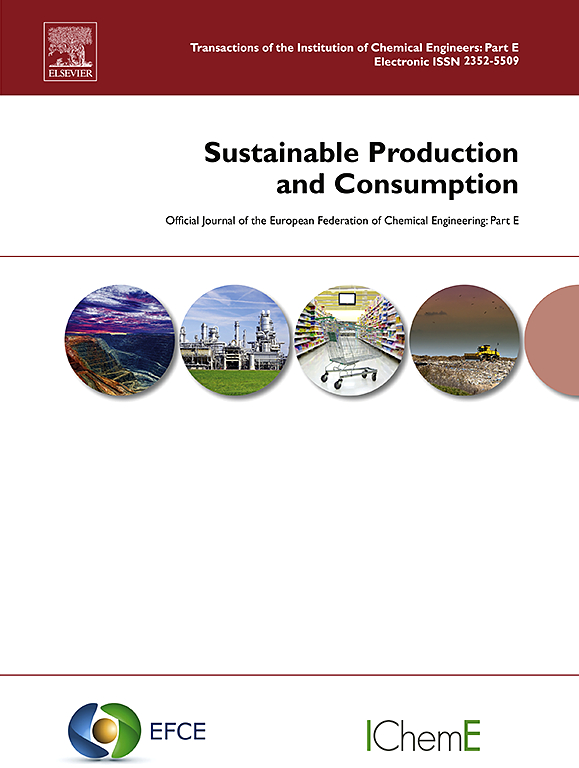Pathways to circular nutrient ecosystems: Strategic roadmaps addressing sustainability drivers and barriers in Australia
IF 9.6
1区 环境科学与生态学
Q1 ENVIRONMENTAL STUDIES
引用次数: 0
Abstract
This study investigates circular ecosystem opportunities in the context of human urine-derived fertilizers, focusing on nutrient recovery within Australia's circular economy framework. Nutrient recovery is pivotal for sustainable resource management; however, existing literature largely focuses on technological advancements while overlooking a systemic business innovation perspective. This research maps key processes and stakeholders within the urine-based fertilizer ecosystem, systematically identifying primary drivers and barriers across four sustainability dimensions: socio-cultural, environmental and health, economic, and technological. The methodology integrates a literature review, extensive stakeholder engagement, and Circular Nutrient Ecosystem Roadmapping Workshops, fostering consensus-building and strategic action planning. Three primary circular ecosystem opportunities emerged: (1) locally sourced urine-based fertilizers, (2) health risk assessment and micropollutant treatment, and (3) precision agriculture services. Transition roadmaps were developed for each opportunity, detailing value propositions, essential processes, and key actors. This study advances the practical application of circular economy principles to ecosystems in bioeconomy context, particularly concerning nutrient recycling from human urine, with implications for sustainability, agriculture, and public health. The findings emphasize actionable roadmaps for the adoption of urine-based fertilizers, demonstrating the potential to transform wastewater management into a more resilient and integrative circular business platform while reducing dependency on phosphate and nitrogen-based fertilizer imports. Furthermore, the research expanded a vision focused only on the technological and economic aspects of the urine-based fertilizers to an ecosystem vision integrating the main dimensions of sustainability. It also expanded the classic roadmap structure by embedding circular ecosystem elements at the core of roadmap development.
循环营养生态系统之路:解决澳大利亚可持续性驱动因素和障碍的战略路线图
本研究调查了人类尿液衍生肥料背景下的循环生态系统机会,重点关注澳大利亚循环经济框架内的养分恢复。养分恢复是可持续资源管理的关键;然而,现有文献大多侧重于技术进步,而忽视了系统的业务创新视角。本研究绘制了尿基肥料生态系统中的关键过程和利益相关者,系统地确定了四个可持续性维度的主要驱动因素和障碍:社会文化、环境和健康、经济和技术。该方法综合了文献综述、广泛的利益相关者参与和循环营养生态系统路线图绘制研讨会,促进了共识的建立和战略行动规划。出现了三个主要的循环生态系统机会:(1)本地采购的尿基肥料,(2)健康风险评估和微污染物处理,以及(3)精准农业服务。为每个机会开发了过渡路线图,详细说明了价值主张、基本过程和关键角色。这项研究推进了循环经济原则在生物经济背景下的生态系统的实际应用,特别是关于人类尿液的营养物质回收,对可持续性、农业和公共卫生的影响。研究结果强调了采用尿基肥料的可行路线图,展示了将废水管理转变为更具弹性和综合性的循环商业平台的潜力,同时减少了对磷肥和氮基肥料进口的依赖。此外,该研究将仅关注尿液肥料的技术和经济方面的愿景扩展到整合可持续性主要维度的生态系统愿景。它还扩展了经典的路线图结构,将循环生态系统元素嵌入路线图开发的核心。
本文章由计算机程序翻译,如有差异,请以英文原文为准。
求助全文
约1分钟内获得全文
求助全文
来源期刊

Sustainable Production and Consumption
Environmental Science-Environmental Engineering
CiteScore
17.40
自引率
7.40%
发文量
389
审稿时长
13 days
期刊介绍:
Sustainable production and consumption refers to the production and utilization of goods and services in a way that benefits society, is economically viable, and has minimal environmental impact throughout its entire lifespan. Our journal is dedicated to publishing top-notch interdisciplinary research and practical studies in this emerging field. We take a distinctive approach by examining the interplay between technology, consumption patterns, and policy to identify sustainable solutions for both production and consumption systems.
 求助内容:
求助内容: 应助结果提醒方式:
应助结果提醒方式:


